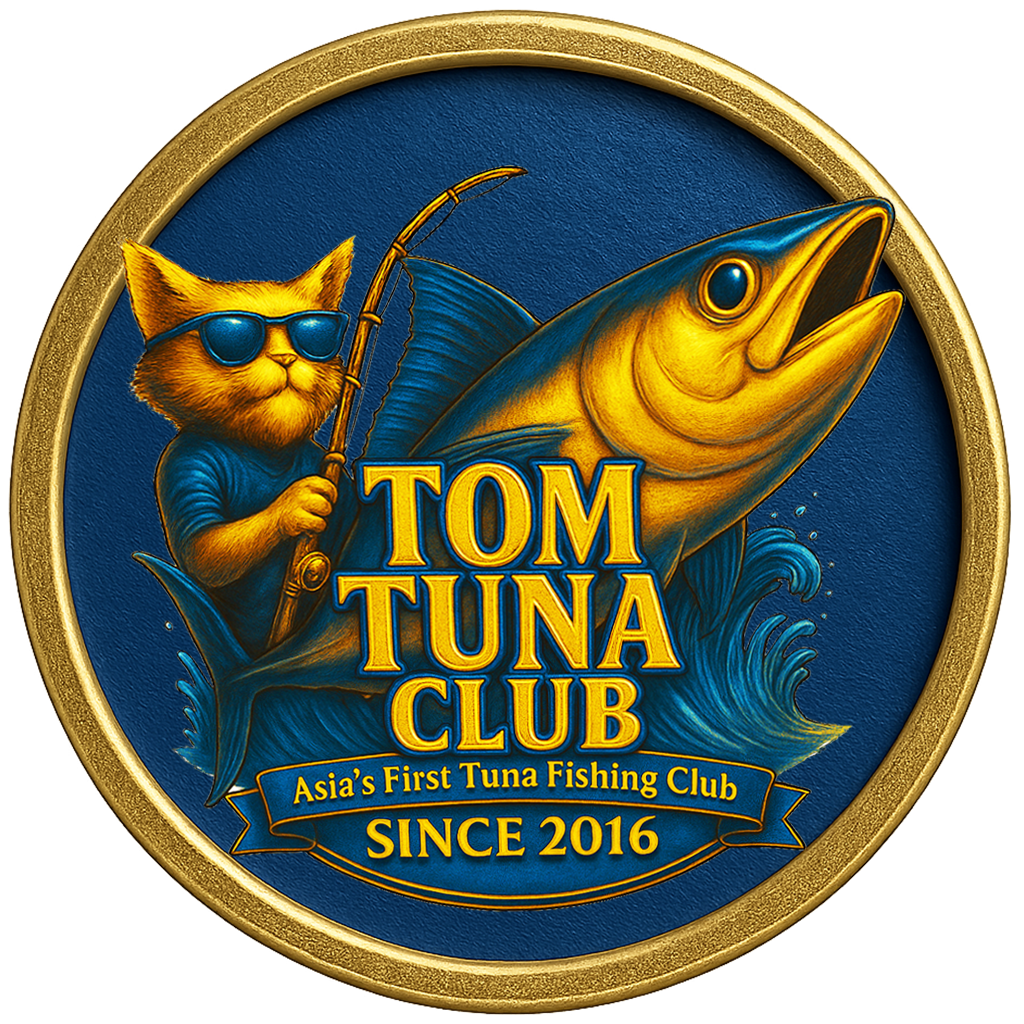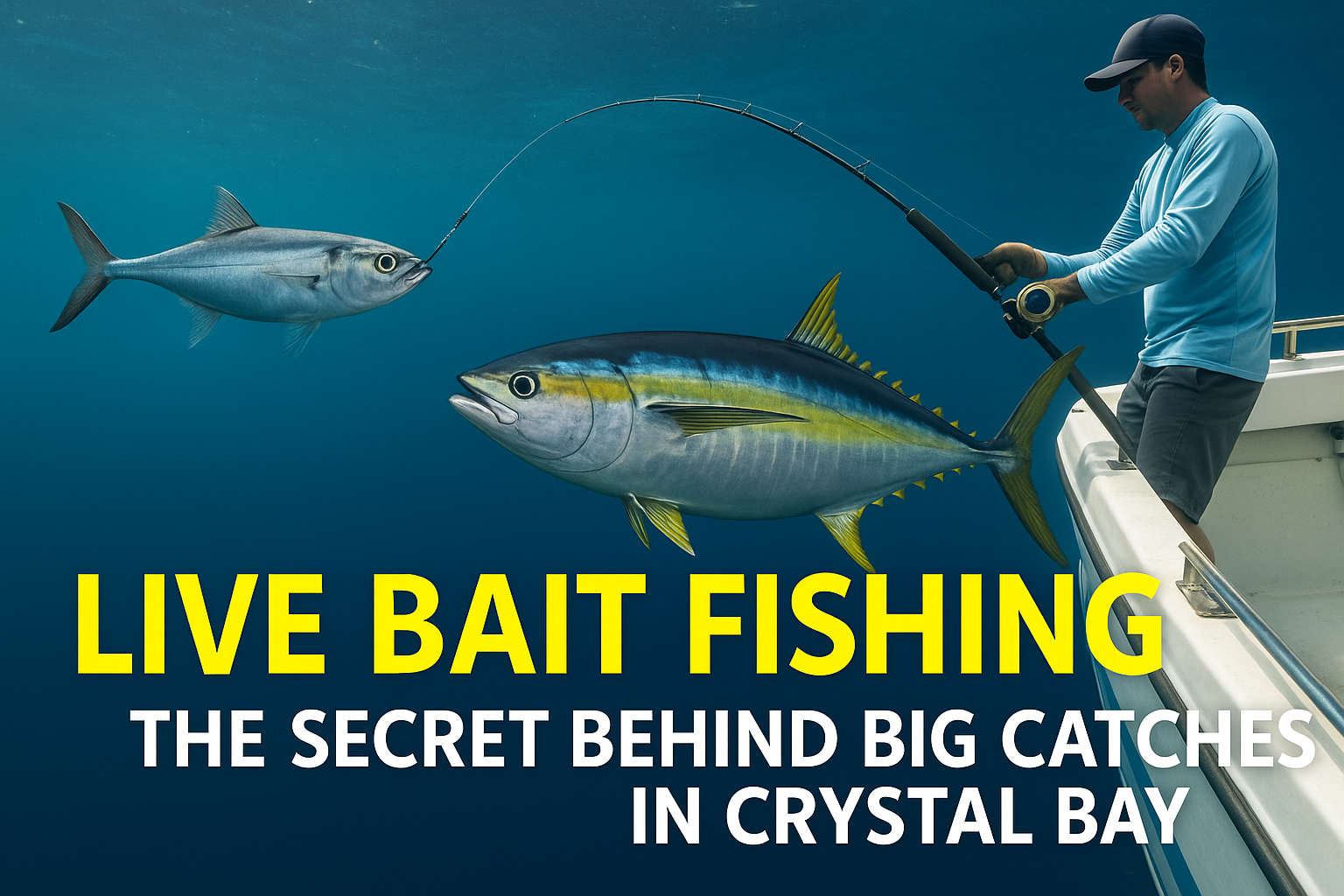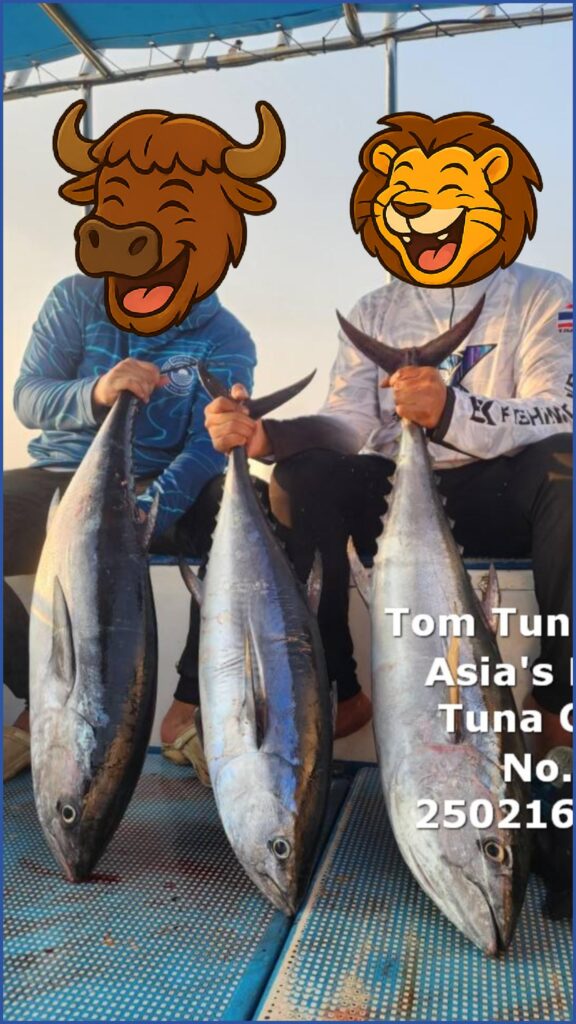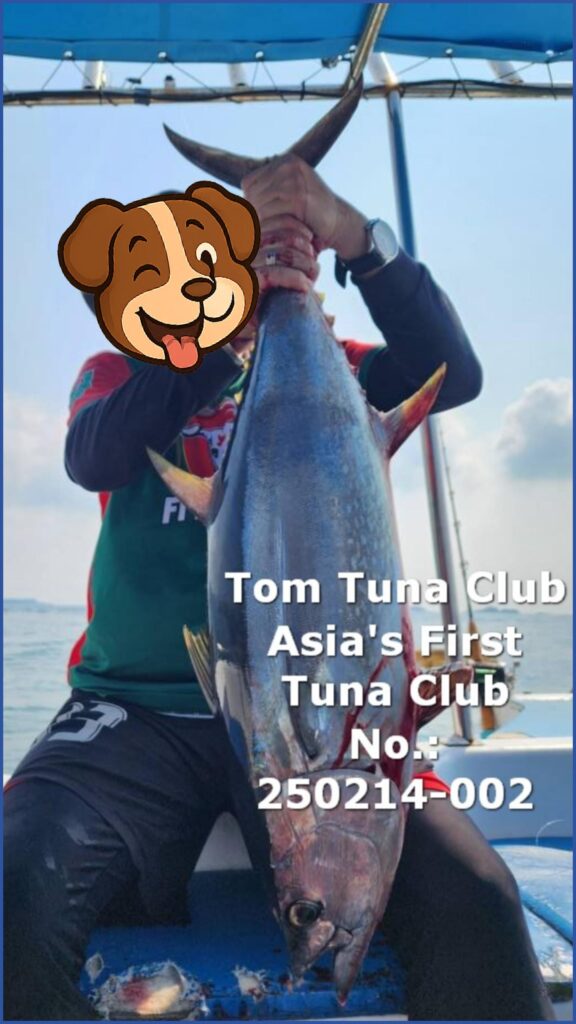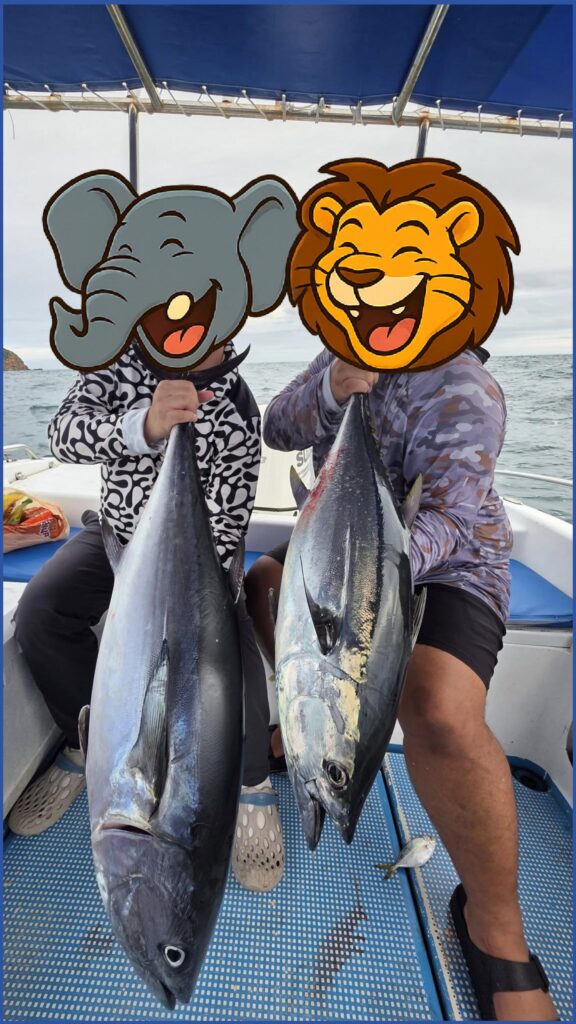Every angler asks: why does Crystal Bay produce so many big tuna and other predators? The answer is simple — live bait. The Gulf’s rich ecosystem supports huge schools of sardines, anchovies, and scads, creating the perfect feeding chain. Where there’s bait, there are big fish.
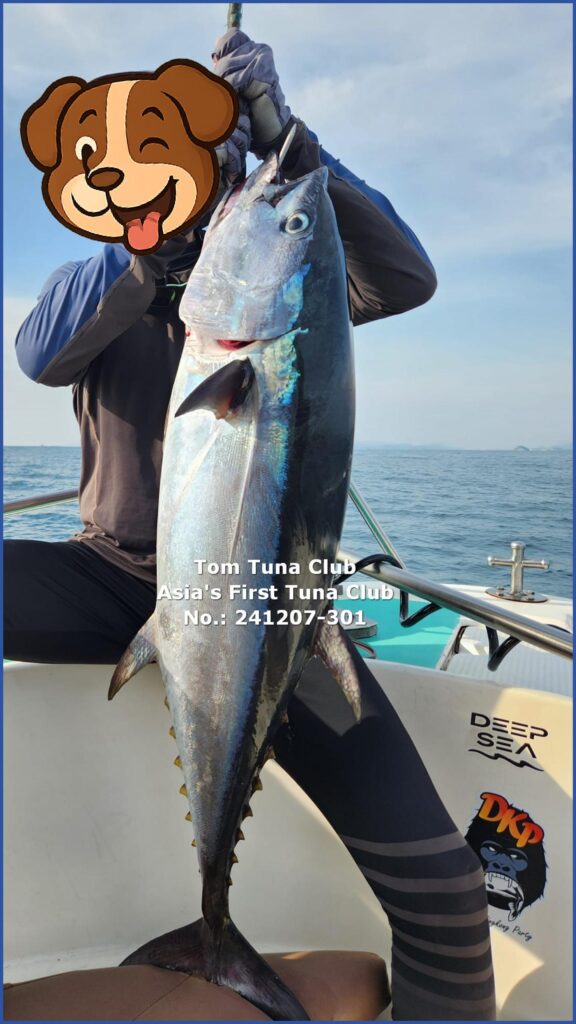
Live bait fishing is the most natural and exciting way to target giants. Instead of artificial lures, anglers use fresh sardines caught right in the bay. Once hooked through the nose or back, the bait swims freely, attracting tuna, cobia, and even sailfish. The movement, the vibration, the panic — predators can’t resist.
Our captains know when to switch from trolling to live bait — usually when sonar shows dense bait clouds or when surface activity slows. The technique is simple but precise: drop the bait gently, keep light tension, and wait for the hit. When the line suddenly tightens and the reel screams, you know it’s real.
What makes Crystal Bay unique is its endless supply of live sardines. The nutrient-rich currents bring fresh bait every day, allowing anglers to fish with the best natural resource the sea provides. This abundance is the true secret behind our record tuna catches.
After landing your fish, our crew often practices catch-and-release for non-table species, ensuring the bay remains productive for generations. Watching a strong tuna or cobia swim away after release is as rewarding as catching it.
Respect the sea, use what it offers, and give back. That’s the spirit of Crystal Bay fishing.
👉 Join a live bait trip and feel the pulse of nature at Tom Tuna Club.
